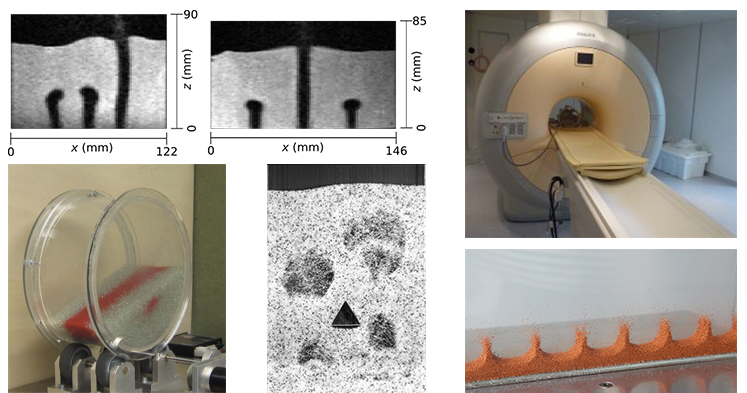Experimental granular physics

We are developing advanced Magnetic Resonance Imaging (MRI) techniques to probe the dynamics of granular systems (Müller et al., 2006; 2010).
This work is done in collaboration with the group of Prof. K. Prüssmann at D-ITET (ETHZ) and relies on medical MRI scanners, thus allowing the study of comparatively large systems. In several studies we have demonstrated the enormous capability of MRI to provide quantitative measurements in 3D two-phase granular systems. Thanks to the high temporal resolution of our measurements, important fluid dynamic phenomena that evolve over very short-times scales, such as coalescence the formation and splitting of bubbles, can be studied. We also work on the development of suitable techniques to measure time-averaged particle velocity, velocity fluctuations and voidage in three-dimensional fluidised beds. This has allowed us to image the formation and interaction of jets at the distributor of a packed bed. Moreover, we could measure the velocity profile around jets (Köhl et al., 2013; 2014).
In addition to MRI measurements, Particle Image Velocimetry (PIV) and high-speed camera imaging is frequently used in our group. These measurements allow us to probe the flow of particles around bubbles and inserts in two-dimensional fluidised beds or the dynamics of surface waves in vibrated beds.
